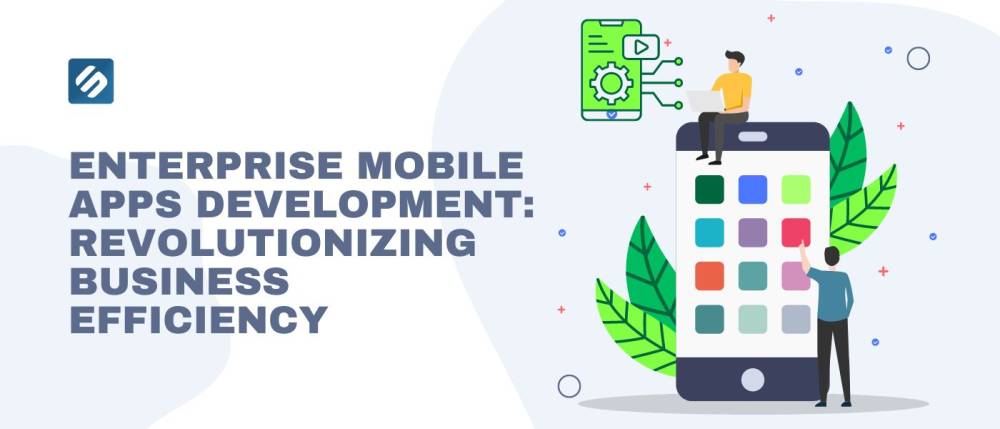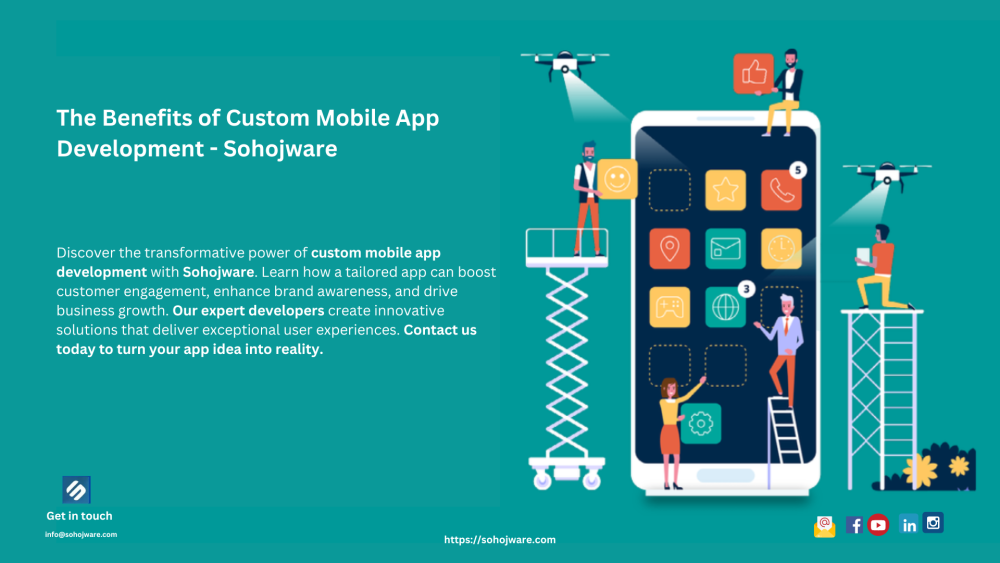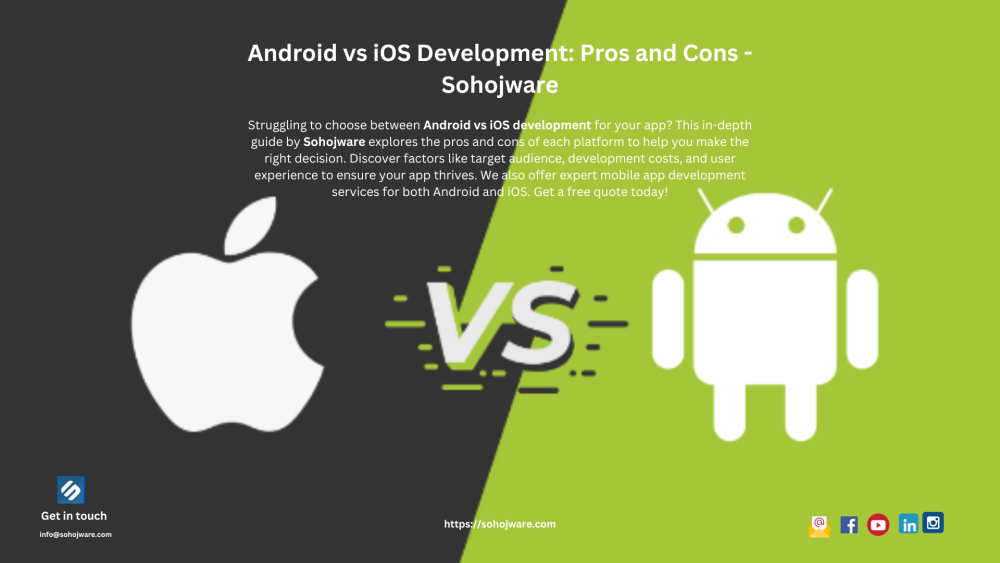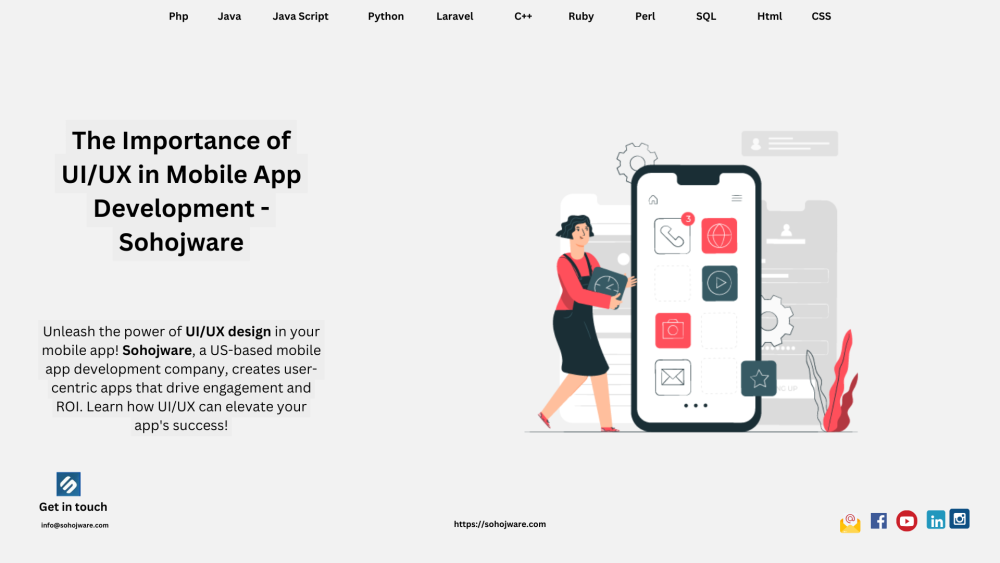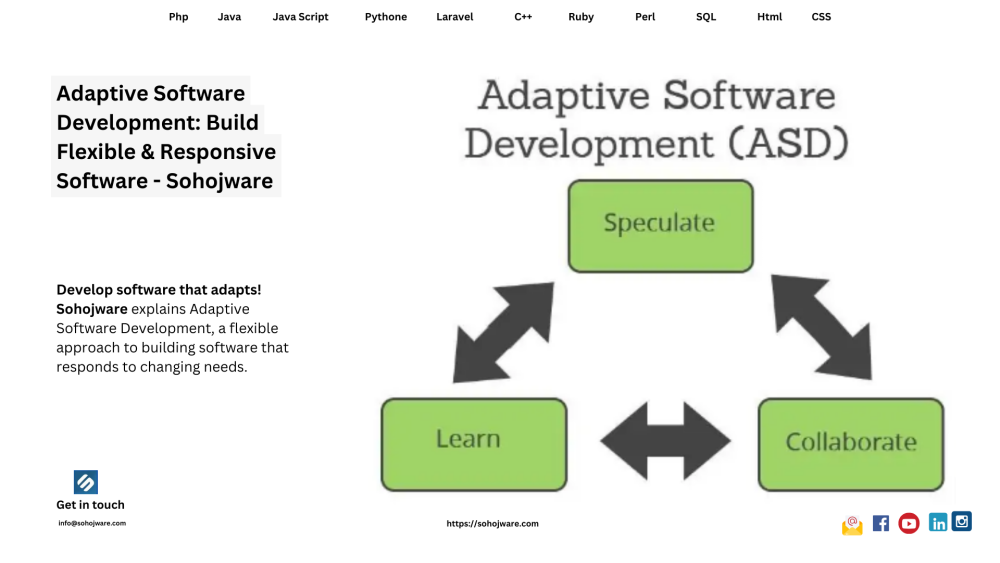In today's digital age, mobile devices have become an integral part of our lives. With the rapid advancement of technology, businesses are leveraging the power of mobile apps to enhance productivity, streamline operations, and engage with their target audience effectively.
In this article, we will explore the world of enterprise mobile app development, its benefits, and how it is revolutionizing business efficiency.
Table of Contents
| Sr# | Headings |
|---|---|
| 1. | Understanding Enterprise Mobile Apps |
| 2. | The Importance of Enterprise Mobile Apps |
| 3. | Advantages of Enterprise Mobile Apps |
| 4. | Key Considerations for Developing Enterprise Mobile Apps |
| 5. | The Development Process for Enterprise Mobile Apps |
| 6. | Popular Technologies for Enterprise Mobile App Development |
| 7. | Security Measures in Enterprise Mobile App Development |
| 8. | User Experience and Interface Design in Enterprise Mobile Apps |
| 9. | Testing and Quality Assurance for Enterprise Mobile Apps |
| 10. | Deployment and Maintenance of Enterprise Mobile Apps |
| 11. | Integrating Enterprise Mobile Apps with Existing Systems |
| 12. | Measuring Success: Analytics and Performance Tracking |
| 13. | Challenges and Solutions in Enterprise Mobile App Development |
| 14. | Future Trends in Enterprise Mobile App Development |
| 15. | Conclusion |
1. Understanding Enterprise Mobile Apps
Enterprise mobile apps are software applications developed specifically for businesses to enhance their internal operations, streamline processes, and improve overall productivity. These apps are designed to cater to the unique requirements of an organization, focusing on employee collaboration, data management, and customer engagement.
2. The Importance of Enterprise Mobile Apps
In the modern business landscape, enterprise mobile apps play a crucial role in staying competitive and meeting customer expectations. They provide a range of benefits, such as:
-
Enhanced Productivity: Enterprise mobile apps enable employees to access critical business information, collaborate on projects, and complete tasks on the go, resulting in improved productivity and efficiency.
-
Streamlined Operations: By automating various business processes, enterprise mobile apps simplify complex workflows, reducing manual errors and saving time.
-
Better Customer Engagement: With enterprise mobile apps, businesses can directly engage with their customers, provide personalized experiences, and offer quick support, leading to higher customer satisfaction and loyalty.
-
Data-driven Decision Making: These apps collect valuable data that can be analyzed to gain insights into business performance, customer behavior, and market trends, enabling informed decision making.
3. Advantages of Enterprise Mobile Apps
When it comes to enterprise mobile app development, the advantages are numerous:
-
Flexibility: Enterprise mobile apps can be customized to meet the specific needs of an organization, accommodating unique business processes and requirements.
-
Improved Communication: These apps facilitate seamless communication between team members, departments, and stakeholders, promoting collaboration and knowledge sharing.
-
Efficient Resource Utilization: By integrating enterprise mobile apps with existing systems, businesses can optimize resource allocation, reduce manual effort, and eliminate duplication of tasks.
-
Enhanced Security: Enterprise mobile app development prioritizes robust security measures to protect sensitive business data, ensuring confidentiality and compliance with data protection regulations.
4. Key Considerations for Developing Enterprise Mobile Apps
When embarking on enterprise mobile app development, several key considerations should be taken into account:
-
Identify Objectives: Clearly definethe objectives and goals of the enterprise mobile app to align it with the overall business strategy.
-
User-Centric Approach: Understand the needs and preferences of the target users to create an intuitive and user-friendly app interface.
-
Platform Selection: Choose the appropriate platform(s) based on the target audience and business requirements, considering factors like iOS, Android, or cross-platform development.
-
Integration Capability: Assess the app's integration capability with existing systems, such as customer relationship management (CRM) or enterprise resource planning (ERP) software.
-
Scalability: Plan for future growth and scalability of the app, ensuring it can accommodate increasing user demands and evolving business needs.
-
Budget and Timeline: Define a realistic budget and timeline for the development process, considering factors like app complexity, features, and resources required.
5. The Development Process for Enterprise Mobile Apps
The development process of enterprise mobile apps generally follows these stages:
-
Ideation and Conceptualization: Brainstorm ideas, define the app's purpose, features, and target audience, and create a rough concept for further development.
-
Design and Wireframing: Create wireframes and design mockups to visualize the app's user interface, ensuring a seamless user experience and incorporating branding elements.
-
Development and Coding: Develop the app using suitable programming languages, frameworks, and development tools, focusing on scalability, security, and performance optimization.
-
Testing and Quality Assurance: Conduct rigorous testing to identify and fix bugs, ensure compatibility across devices and platforms, and verify the app's functionality and performance.
-
Deployment: Prepare the app for release by optimizing its performance, adhering to platform-specific guidelines, and submitting it to the respective app stores for distribution.
-
Maintenance and Updates: Regularly update the app to address user feedback, fix issues, and add new features, ensuring its continuous improvement and alignment with evolving business needs.
6. Popular Technologies for Enterprise Mobile App Development
Several technologies and frameworks are commonly used for enterprise mobile app development:
-
Native App Development: Utilizing platform-specific programming languages like Swift or Objective-C for iOS and Java or Kotlin for Android, native app development offers optimal performance and access to device-specific features.
-
Cross-platform App Development: Frameworks like React Native, Flutter, or Xamarin enable developers to build apps that can run on multiple platforms, reducing development time and cost.
-
Progressive Web Apps (PWA): PWAs combine the best features of web and mobile apps, providing an app-like experience through web browsers and offering offline functionality, push notifications, and responsive design.
-
Low-Code/No-Code Development: These platforms allow businesses to create mobile apps with minimal coding knowledge, using visual interfaces and pre-built components, making app development more accessible and faster.
7. Security Measures in Enterprise Mobile App Development
Ensuring the security of enterprise mobile apps is crucial to protect sensitive business information and user data. Here are some essential security measures:
-
Data Encryption: Implement encryption techniques to safeguard data transmission and storage, preventing unauthorized access and ensuring data confidentiality.
-
Secure Authentication: Utilize strong authentication methods like biometrics, two-factor authentication, or multi-factor authentication to verify user identities and prevent unauthorized access.
-
App Permissions: Implement granular control over app permissions, allowing users to grant or deny access to specific device features and data.
-
Regular Updates and Patching: Keep the app up-to-date with the latest security patches and bug fixes to address vulnerabilities and protect against emerging threats.
-
Secure Backend Infrastructure: Maintain a robust and secure backend infrastructure to prevent data breaches and ensure the integrity of business-critical information.
8. User Experience and Interface Design in Enterprise Mobile Apps
User experience (UX) and interface design are critical factors in the success of enterprise mobile apps. Here are some key considerations:
-
Intuitive Navigation: Design a user-friendly interface with clear and intuitive navigation patterns, allowing users to easily access the app's features and functionalities.
-
Consistent Design Language: Maintain consistency in design elements, such as colors, typography, and icons, to create a cohesive and visually appealing app.
-
Responsive Design: Ensure the app is responsive and adapts seamlessly to different screen sizes and orientations, providing a consistent experience across devices.
-
Minimalist Approach: Adopt a minimalist design approach, focusing on simplicity and removing clutter, to enhance usability and streamline the user journey.
-
Feedback and Error Handling: Provide informative feedback and error messages to guide users and help them recover from errors or unexpected situations.
-
Usability Testing: Conduct usability testing with target users to gather feedback, identify pain points, and refine the app's design for optimal user experience.
9. Testing and Quality Assurance for Enterprise Mobile Apps
Thorough testing and quality assurance (QA) processes are essential to ensure the functionality, performance, and reliability of enterprise mobile apps. Consider the following testing approaches:
-
Functional Testing: Verify that all app features and functionalities are working as intended, conducting both manual and automated tests to identify and fix any issues.
-
Compatibility Testing: Test the app across different devices, operating systems, and screen sizes to ensure compatibility and consistent performance.
-
Performance Testing: Evaluate the app's performance under different load conditions, assessing factors like response time, scalability, and resource utilization.
-
Security Testing: Conduct security audits, penetration testing, and vulnerability assessments to identify and address any potential security vulnerabilities or weaknesses.
-
Usability Testing: Test the app with real users to gather feedback on usability, navigation, and overall user experience, making necessary improvements.
-
Regression Testing: Perform regression tests after each app update to ensure that new changes do not introduce regressions or impact existing functionalities.
10. Deployment and Maintenance of Enterprise Mobile Apps
After thorough testing, the deployment and maintenance phase of enterprise mobile apps begins. Consider the following steps:
-
App Store Submission: Prepare the app for submission to the relevant app stores, adhering to their guidelines and requirements, and optimizing the app's metadata and visuals.
-
App Store Optimization (ASO): Optimize the app's listing by using relevant keywords, engaging descriptions, and appealing visuals to improve visibility and increase downloads.
-
Monitoring and Analytics: Implement analytics tools to track user behavior, app usage, and performance metrics, gaining insights for continuous improvement and decision making.
-
Bug Fixing and Updates: Regularly monitor user feedback and bug reports, addressing issues promptly and releasing updates to improve stability, security, and performance.
-
User Support and Engagement: Provide support channels, such as in-app chat or email, to assist users with queries or issues, and engage with users through regular updates, notifications, or feedback requests.
11. Integrating Enterprise Mobile Apps with Existing Systems
Integrating enterprise mobile apps with existing systems is crucial for data synchronization, workflow automation, and seamless information exchange. Consider the following integration possibilities:
-
API Integration: Utilize application programming interfaces (APIs) to connect the mobile app with backend systems, enabling real-time data transfer and integration with existing databases or services.
-
Single Sign-On (SSO): Implement SSO solutions to allow users to access the mobile app using their existing login credentials, eliminating the need for separate authentication.
-
Data Synchronization: Ensure smooth synchronization of data between the mobile app and existing systems, enabling users to access up-to-date information across different platforms.
-
Third-Party Integrations: Integrate the app with third-party services,such as payment gateways, social media platforms, or cloud storage providers, to enhance functionality and provide a seamless user experience.
12. Measuring Success: Analytics and Performance Tracking
To measure the success of enterprise mobile apps and make data-driven decisions, implement analytics and performance tracking tools. Consider the following:
-
Key Performance Indicators (KPIs): Define relevant KPIs, such as app downloads, user engagement, conversion rates, or revenue generated, to track and evaluate the app's performance.
-
User Behavior Analysis: Utilize analytics tools to gain insights into user behavior, preferences, and usage patterns, identifying areas for improvement and optimizing the app accordingly.
-
App Performance Monitoring: Monitor the app's performance metrics, such as response time, crashes, or errors, to identify bottlenecks, optimize performance, and provide a smooth user experience.
-
A/B Testing: Conduct A/B tests to compare different variations of the app's design, features, or user flows, identifying the most effective options and refining the app based on user feedback.
-
Feedback and Review Analysis: Regularly review user feedback, ratings, and reviews to understand user sentiments, address concerns, and implement enhancements based on user suggestions.
13. Challenges and Solutions in Enterprise Mobile App Development
Enterprise mobile app development can come with various challenges. Here are a few common ones and their solutions:
-
Security Concerns: Employ robust security measures, conduct regular security audits, and ensure compliance with data protection regulations to mitigate security risks.
-
Complex Integration: Plan integration strategies carefully, collaborate with IT teams, and utilize standardized protocols or APIs for seamless integration with existing systems.
-
Cross-Platform Compatibility: Choose cross-platform development frameworks, conduct thorough testing, and optimize the app for different platforms to ensure compatibility.
-
User Adoption and Engagement: Prioritize user-centric design, conduct user testing, gather feedback, and offer incentives or rewards to encourage user adoption and engagement.
-
Performance Optimization: Employ best coding practices, conduct performance testing, optimize resource usage, and regularly update the app to ensure optimal performance.
14. Future Trends in Enterprise Mobile App Development
Enterprise mobile app development continues to evolve, and several trends are shaping its future. Here are a few noteworthy ones:
-
Artificial Intelligence (AI) Integration: AI technologies, such as machine learning and natural language processing, are being integrated into enterprise mobile apps to automate tasks, enhance personalization, and enable intelligent decision making.
-
Internet of Things (IoT) Integration: With the growth of IoT, enterprise mobile apps are integrating with IoT devices to enable real-time data collection, monitoring, and control, enhancing operational efficiency.
-
Augmented Reality (AR) and Virtual Reality (VR): AR and VR technologies are finding applications in enterprise mobile apps, offering immersive experiences for training, remote collaboration, and visualization of complex data.
-
Blockchain Integration: Blockchain technology is being utilized to enhance security, transparency, and data integrity in enterprise mobile apps, particularly in industries like supply chain management and finance.
-
Progressive Web Apps (PWA) Adoption: The adoption of PWAs is growing, as they offer the benefits of both web and mobile apps, enabling offline access, push notifications, and cross-platform compatibility.
15. Conclusion
Enterprise mobile app development is revolutionizing how businesses operate, providing enhanced productivity, streamlined processes, and improved customer engagement. By leveraging the power of mobile technology, businesses can achieve greater efficiency, agility, and competitiveness in today's digital landscape.
With proper planning, user-centric design, robust security measures, and continuous improvement, enterprise mobile apps have the potential to transform businesses and drive their success in the future.
FAQs (Frequently Asked Questions)
Q1. How long does ittake to develop an enterprise mobile app?
The development timeline for an enterprise mobile app can vary depending on various factors, including the complexity of the app, the number of features, platform compatibility, and the availability of resources. On average, it can take anywhere from a few months to a year or more to develop a fully functional enterprise mobile app.
Q2. What is the cost of developing an enterprise mobile app?
The cost of developing an enterprise mobile app depends on several factors, including the app's complexity, features, platform compatibility, design requirements, and the development team's rates. It is recommended to consult with professional app development agencies or developers to get a detailed estimate based on your specific app requirements.
Q3. How can I ensure the security of my enterprise mobile app?
To ensure the security of your enterprise mobile app, it is essential to implement robust security measures, such as data encryption, secure authentication, app permission control, regular updates and patching, and a secure backend infrastructure. It is also crucial to conduct regular security audits and follow best practices in secure coding and data handling.
Q4. Can an enterprise mobile app be integrated with existing business systems?
Yes, enterprise mobile apps can be integrated with existing business systems, such as customer relationship management (CRM), enterprise resource planning (ERP), or inventory management systems. Integration can be achieved through APIs, single sign-on (SSO) solutions, or data synchronization techniques to ensure seamless information exchange and workflow automation.
Q5. How can I measure the success of my enterprise mobile app?
Measuring the success of an enterprise mobile app involves tracking key performance indicators (KPIs) such as app downloads, user engagement, conversion rates, revenue generated, and user feedback. By implementing analytics and performance tracking tools, you can gain insights into user behavior, app performance, and user satisfaction, which can guide decision making and continuous improvement efforts.
